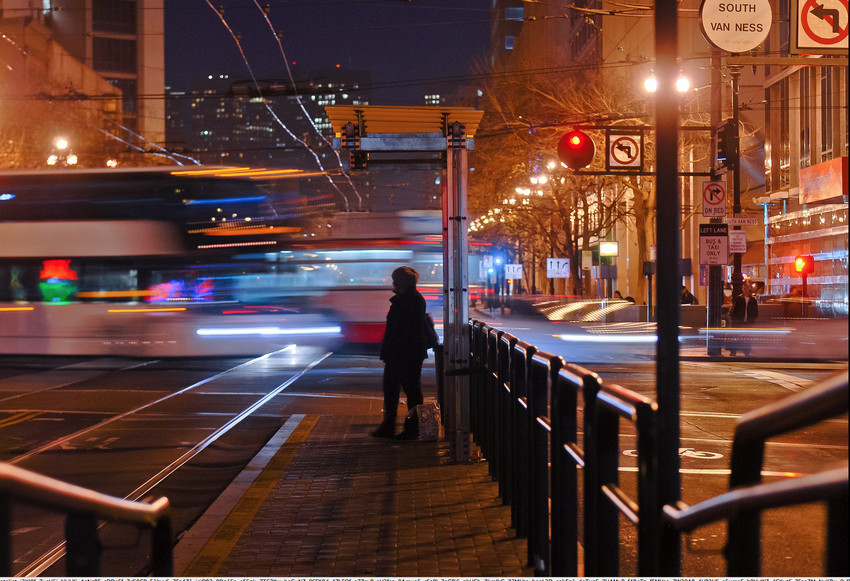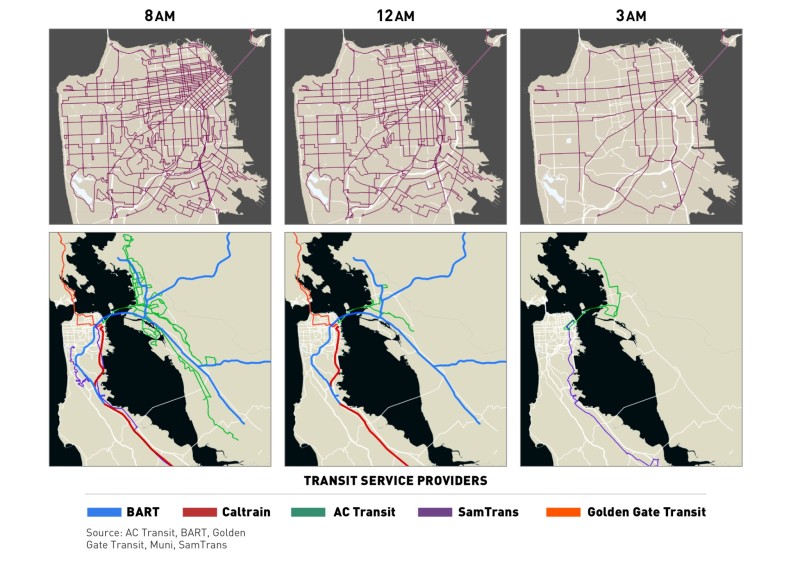For the first time in a decade, San Francisco transportation officials have a road map to improve late-night and early-morning travel for the tens of thousands of graveyard shift workers and night owls who currently have limited transportation options unless they drive.
In a 27-page report to be released Monday (embedded below), city officials, nightlife advocates, labor union representatives and others recommend developing plans to make overnight local and transbay bus service more frequent, reliable and safe.
In response to earlier calls for improved nighttime transit, BART and AC Transit have already expanded weekend transbay bus service as part of a one-year pilot program, and funding to boost Muni's Owl service by 30 percent will be considered Tuesday by the San Francisco County Transportation Authority board.
"We know what needs to happen, and some of it has happened, and some of it will happen later this year," said Supervisor Scott Wiener, who convened the group last April.
The report calls for a long-term regional effort to press for funding so that overnight rail service on BART, and a second transbay tube, become a reality someday:
While 24-hour rail service is decades away and would require substantial funding for major new capital investments and operating costs that have not been identified, appropriate and timely steps must be taken to work toward its implementation.
The report urges BART and Muni to better explain why overnight rail service is not currently doable. Both agencies have said that downtime overnight is critical for maintenance work.

